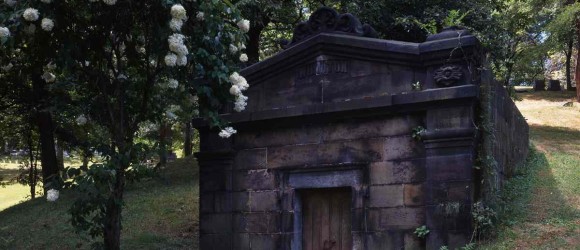Jewish Mausoleums & Monuments
- At March 11, 2013
- By Karen Parker
- In Mausoleum Design
 0
0

Most mausoleums place remains above ground inside a mausoleum crypt. Because Scripture and Jewish tradition dictate burial of the deceased in the ground, mausoleums are not commonly used by the Jewish faithful. Instead, Jewish cemetery monuments are placed over the earthen grave of the beloved deceased.
Traditional Mausoleum
While earth burial is traditional, the three movements of Orthodox, Conservative, and Reform Judaism disagree over this sensitive issue. The Orthodox movement of Judaism allows no cremations or interments but mandates below-ground burial only. They refer to various phrases of the Bible to determine their position. In Genesis 3:19, God says dust thou art and unto dust thou shalt return. Also, Ecclesiastes 12:7 states The dust returns to the dust as it was, but the spirit returns to God who gave it. To orthodox Jews, this means that they must be buried in the ground so they may return to dust.
For this reason, the only Jewish mausoleum that Orthodox Jews allow is a mausoleum that extends underground. This is easier when Jewish monuments are built on a hillside, making Jewish cemetery monuments an entrance to the underground.
The Reform movement allows above-ground interment in a Jewish mausoleum based on precedents from the Bible and historic sites such as the Cave of the Patriarchs, Rachel’s Tomb, Tomb of Daniel, Tomb of Absalom, Montefiore Synagogue, Ezra’s Tomb, and Sassoon Mausoleum. The Conservative movement of Judaism mostly follows the same burial philosophy as the Reform movement, but different synagogues of Conservative Jews consider each proposed moseleum separately. They make their decision on whether or not it is acceptable according to the Torah, Jewish Law, and precedents relative to the particular family mausoleum.
Examples of Jewish Mausoleum
One example of varied options for final resting places is the city-operated Boca Raton Cemetery. The cemetery offers the Boca Raton mausoleum with indoor and outdoor crypts, niches for cremation urns, and acres of land for traditional burials and monuments. Jewish cemetery monuments may cover an earthen grave or a Jewish monument may be a mausoleum containing caskets and cremation urns. Regardless of the particular rules by which the beloved deceased is put to his or her final rest, a Jewish monument memorializes both life and faith.
“
